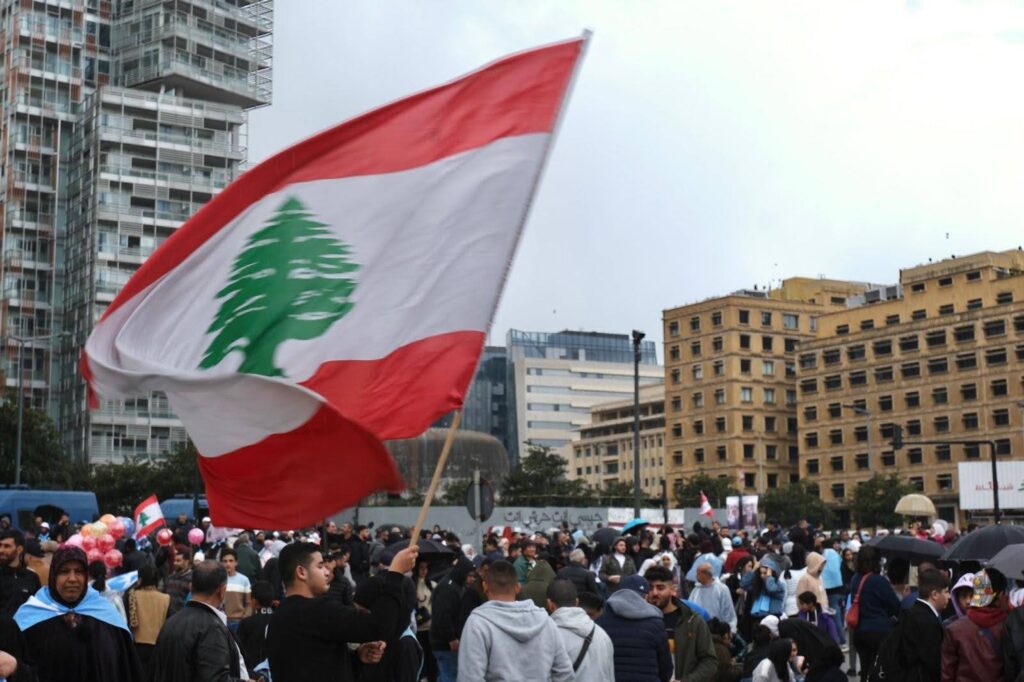Over a century ago, in the bustling streets of Beirut in Lebanon and Damascus in Syria, a tale of haunting chapters began to unfurl.
On May 6, 1916, Ottoman ruler Jamal Pasha ordered the execution of 20 Lebanese and Syrian nationalists accused of collaborating with the British and French. In the heart of Beirut’s Burj Square and Damascus’ Marjeh Square, these lives were suddenly ended and their voices forever silenced.
Today, the Lebanese soberly honor these nationalists, revered as poets, journalists, and patriots, viewing them not as traitors but as martyrs.
In the time since, both plazas in Beirut and Damascus have been renamed Martyrs’ Square. They now stand as a poignant testament to their sacrifice, a symbol of the enduring quest for freedom and independence.
The 20 martyrs’ valor, immortalized in Lebanese history textbooks, remains deeply etched in the minds of schoolchildren, compellingly retold year after year.
May 6th has been officially designated Martyrs’ Day. It is a national holiday marked by school and bank closures. Public commemorations in Martyrs’ Square attended by government officials, and wreath-laying ceremonies by the president to honor the fallen. These details are outlined in Lucia Volk’s book, “Memorials and Martyrs in Modern Lebanon.”
This day is observed with reverence through memorial events across Lebanon and Syria, with the hashtag #MartyrsDay used to raise awareness on social media.
Pasha ‘The Butcher’
The Ottoman ruler Jamal Pasha, known as ‘Al Jazzar’ or ‘The Butcher’ for his ruthless rule, cast a dark shadow over Lebanon during the Ottoman era.
In February 1915, frustrated by his failed attack on British forces guarding the Suez Canal, Pasha imposed a ruthless blockade along the eastern Mediterranean coast. This move aimed to deprive his enemies of vital supplies. Lebanon was hit hard by the blockade, causing severe food shortages. It led to famine and plague, killing over a quarter of the population and leaving a tragic mark on Lebanon’s history.
Six Name Transitions
For decades, Beirut’s central square has stood as a silent witness to its tumultuous history through its changing names. Originally known as Al-Burj Square, it took its inspiration from the ancient watchtower, Burj al-Kashef, which once marked its perimeter.
Over time, this square underwent six name changes. In 1773, it was christened Cannon Square, owing to the presence of a Russian cannon near the watchtower. In 1860, the arrival of a French fleet led to a modification, resulting in the name Cannons’ Square.
Later, in 1884, under Ottoman rule, it was renamed Hamidiyyeh Square in tribute to Sultan Abdul Hamid II. Subsequent names included Union Square and Freedom Square, reflecting the political currents of the Young Turk revolution in 1908.
Finally, after 23 years, it acquired its enduring name, Martyrs’ Square, as reported by The 961.
Symbolic Significance
Several years later, the iconic Martyrs’ Monument emerged. Standing at four meters tall, this statue was crafted by the Italian artist Marino Mazzacurati and unveiled by President Fouad Chehab in 1960.
Throughout the Civil War from 1975 to 1990, Martyrs’ Square served as a poignant symbol, dividing Beirut into opposing territories. Like much of the city, the monument suffered destruction during the war. However, in 1996, the Holy Spirit University of Kaslik undertook its restoration, deliberately preserving the scars inflicted by bullets and shrapnel as a testament to Lebanon’s tumultuous past, as recounted by The 961.
With the advent of the Cedar Revolution in 2005, Martyrs’ Square assumed newfound importance as a focal point for Lebanese demonstrations.
During the October 17th uprising, it became a rallying ground for protesters who camped out, demanding governmental reforms. This era witnessed the introduction of new sculptures and artistic installations, adding another chapter to the square’s rich history.
Today, Martyrs’ Square stands as a reminder to the recent memories of the October 17th uprising, with a five year old fist raised in reminder of the people’s revolution. While little has changed in the political order since then, Martyrs’ Square remains a crucial gathering point for political rallies, protests, and knowledge-sharing circles – a testament to the square’s enduring significance for public and political life.
